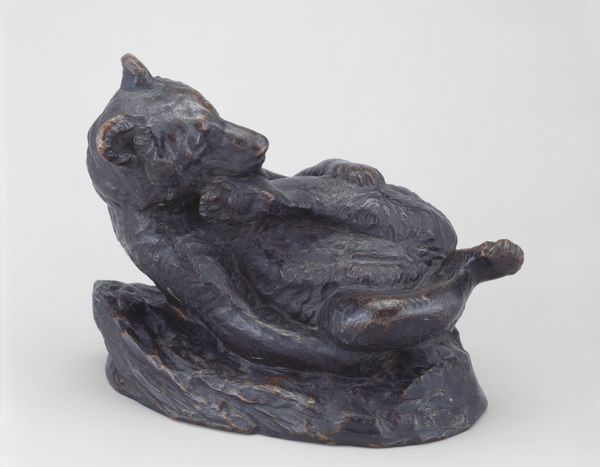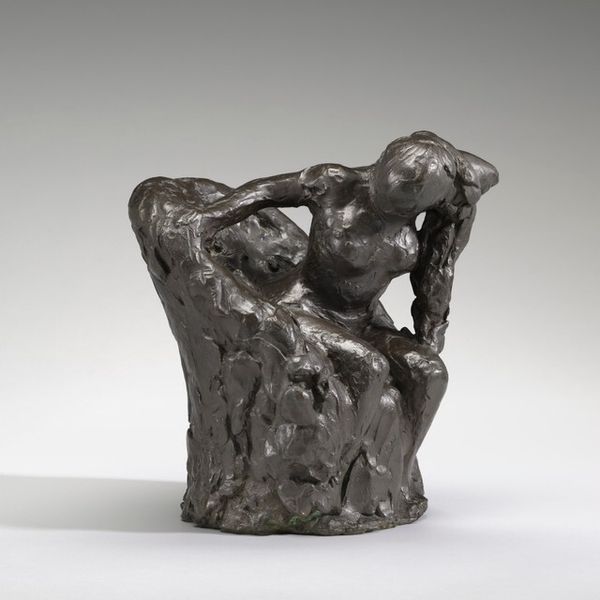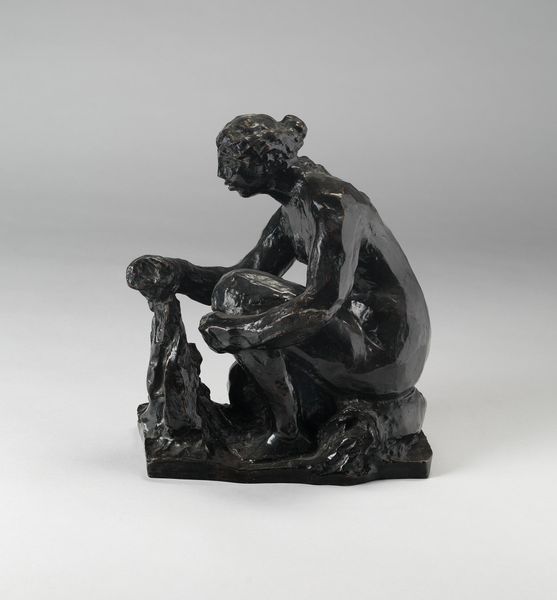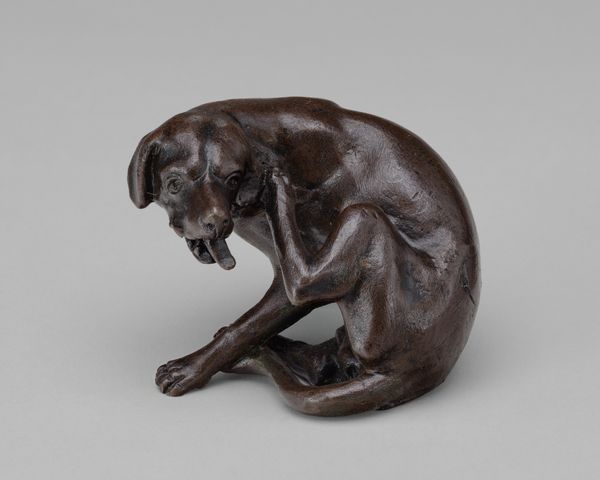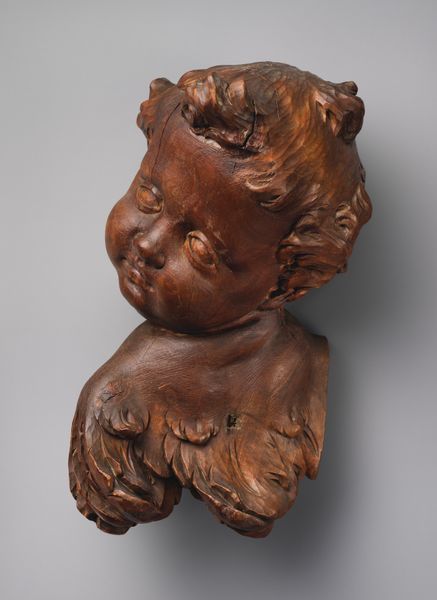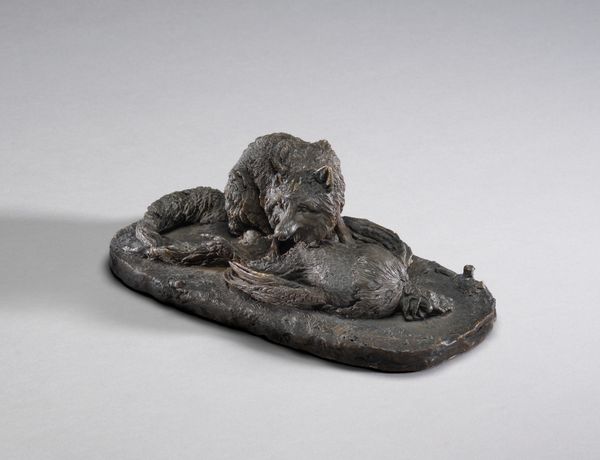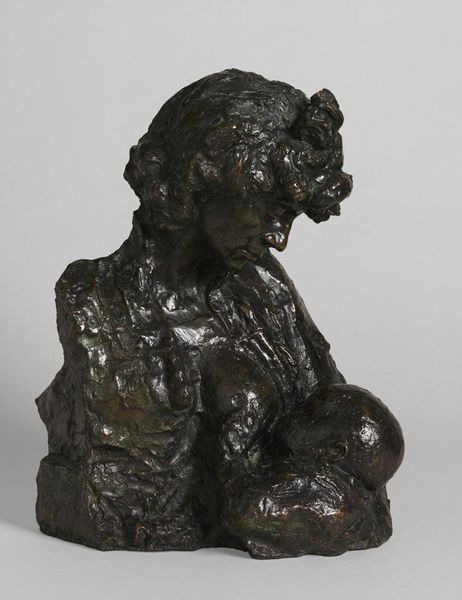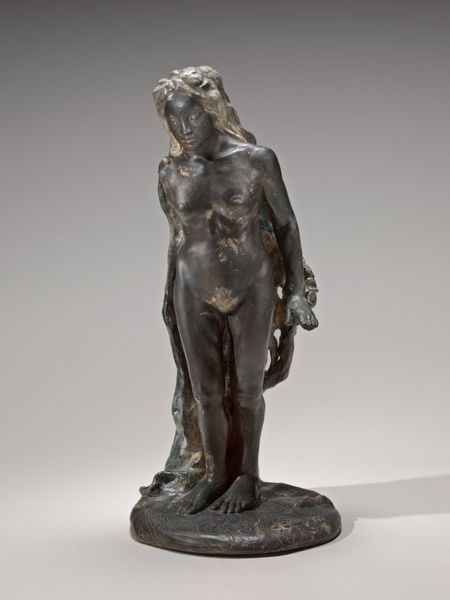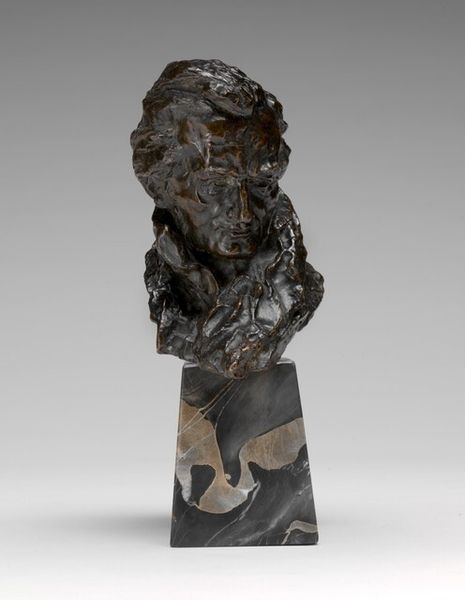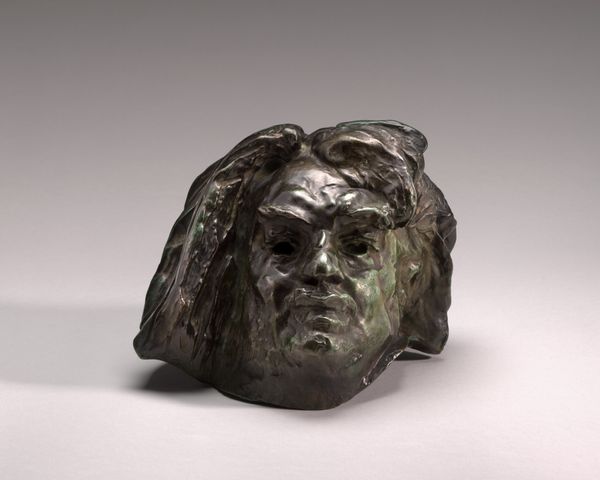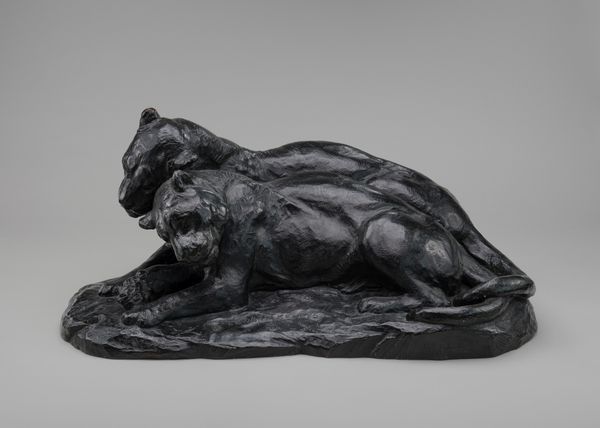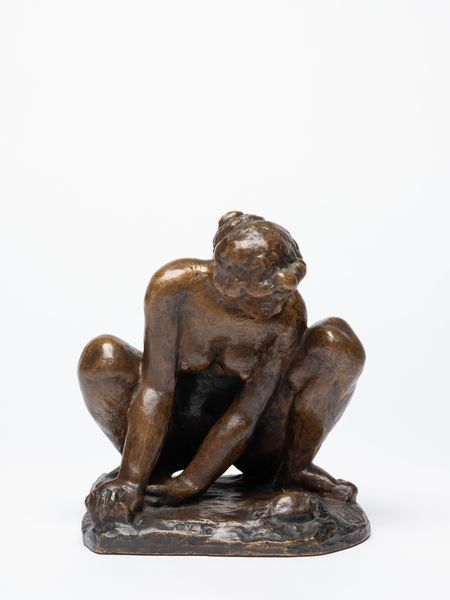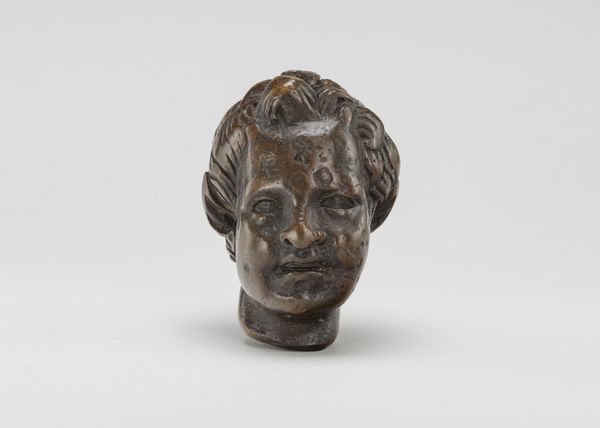
Portrait of a Woman (Mme Albert Bartholomé (?)) 1890 - 1920
0:00
0:00
Dimensions: Overall: 4 5/8 × 6 1/4 × 7 in. (11.7 × 15.9 × 17.8 cm)
Copyright: Public Domain
Curator: Here we have "Portrait of a Woman (Mme Albert Bartholomé (?))", rendered in bronze by Edgar Degas, sometime between 1890 and 1920. What's your initial reaction to it? Editor: She seems so...withdrawn. There's this heavy sadness, but it's also strangely peaceful. The dark patina of the bronze deepens that somber mood. The composition, too, with her resting her face on her hand, conveys fatigue or perhaps deep contemplation. Curator: I think that's spot-on. Degas wasn't just trying to capture likeness, was he? The pose speaks to the sitter's internal world, not just her physical presence. The way he's roughed up the surface, left the marks of his hand so evident, that's almost brutal in its honesty. It rejects classical smoothness for something far more psychologically raw. Editor: It's the antithesis of idealization, definitely. You feel like you're looking at a real person burdened by something, or maybe just life itself. And bronze as a medium – we often associate it with commemoration and triumph. Here, it's almost a counter-monument, marking a private, unseen emotion. The lowered eyes have resonated in art for centuries, signaling introspection, a refusal to meet the gaze of the world. I wonder what inner space Degas wanted to reveal here. Curator: Degas was often like that – a rebel within Impressionism. This bust is quite different from his ballerinas, who seem to defy gravity; this woman appears firmly grounded, held down by something intangible. The title gives us so little—only a tentative identification. Maybe this ambiguity forces us to confront the universal experiences of sorrow or resignation. Editor: Right, the uncertainty in the title adds to the mystery. It emphasizes the "woman" over the "Mme Bartholomé," so, perhaps we're invited to see her as an archetype. A stand-in for unspoken emotional realities that echo across cultures and time. Bronze, though fixed and permanent, oddly gives the face a vulnerable feel in how the light interacts with its surfaces. Curator: Exactly! Perhaps, we, as viewers, should reflect more on how these emotional undercurrents connect us. What feelings this portrait evokes within our own history. Editor: What she reminds us of, the universal vulnerability inherent in all living things. I'm grateful that Degas immortalized something as fragile as inner contemplation.
Comments
No comments
Be the first to comment and join the conversation on the ultimate creative platform.
